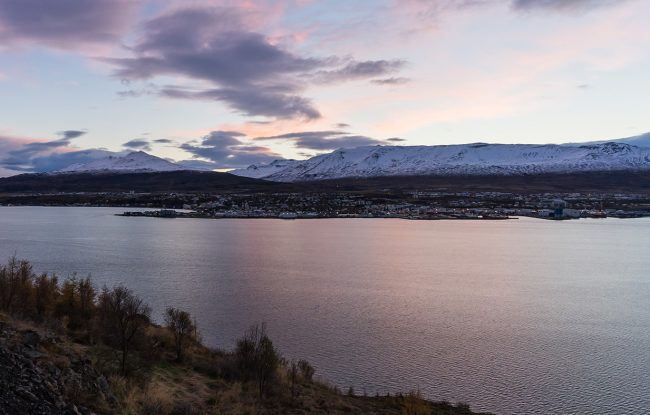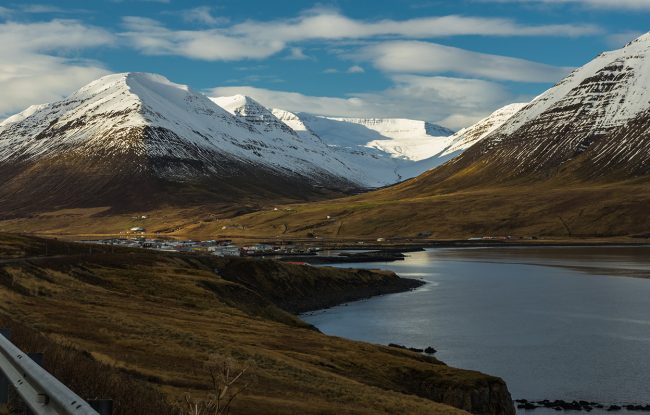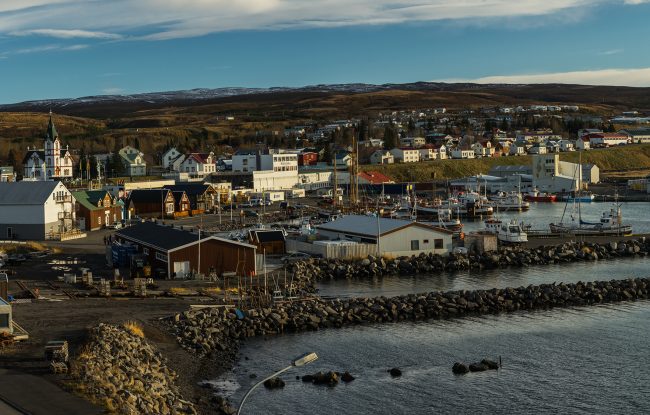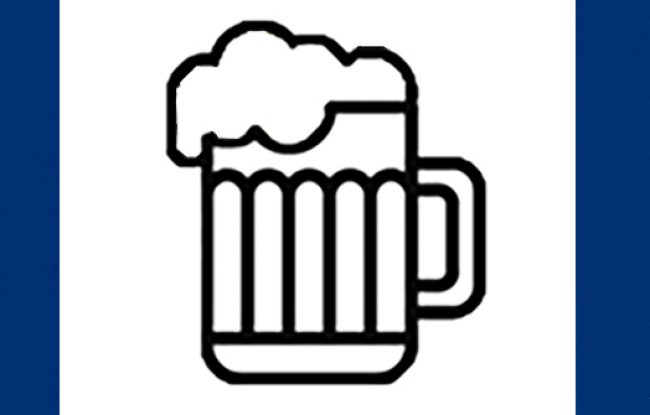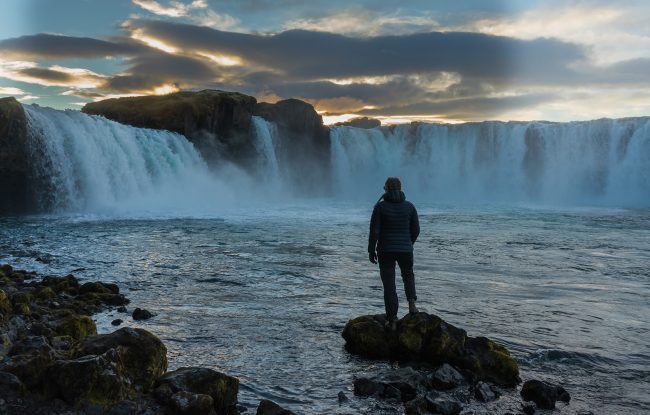




Loading
Akureyri is a town in northern Iceland, nicknamed the Capital of North Iceland, Akureyri is an important port and fishing center. It is Iceland's fourth largest municipality (after Reykjavík, Hafnarfjörður, and Kópavogur). The area where Akureyri is located was settled in the 9th century but did not receive a municipal charter until 1786. The town was the site of Allied units during World War II. Further growth occurred after the war as the Icelandic population increasingly moved to urban areas. Akureyri's population is 18.860. The area has a relatively mild climate because of geographical factors, and the town's …
Ólafsfjörður is a town connected to Dalvík on Eyjafjörður by the 3.5 km one-lane Múli tunnel and to Siglufjörður by the 11 km Héðinsfjörður Tunnels, opened in 2010. Fishing is the main industry in the town several trawlers make their home in the town's harbor. The municipalities of Ólafsfjörður and Siglufjörður merged in 2006 to form the municipality of Fjallabyggð, which literally means Mountain Settlement. Popular places for skiing and ski touring and Ólafsfjörður has been getting known for surfing in the winter time as well. …
Is a rather big town in the far north of Iceland it has around 2240 inhabitants. Fishing and tourism is their main income. Húsavík is known as the capital of whale watching in Iceland, definitely recommend doing a whale watching tour from Húsavík. In Húsavík variety of museums can be found such as the whale museum, exploration museum, and there is always exhibition in the cultural house of Húsavík along with some galleries. They also recently opened the Geothermal Sea Baths in Húsavík and you can make the perfect day out exploring the whales and then relaxing in the geothermal spa.…
Húsavík öl is a microbrewery located in Húsavík. …
The Goðafoss waterfall, the name means Norse gods waterfall and it is one of the most spectacular waterfalls in Iceland. The water of the river Skjálfandafljót falls from a height of 12 meters over a width of 30 meters. In the year 1000, the Lawspeaker Þorgeir Ljósvetningagoði made Christianity the official religion of Iceland. After his conversion, Þorgeir threw his statues of the Norse gods into the waterfall. The story of Þorgeir's role in the adoption of Christianity in Iceland is preserved in Íslendingabók, however, makes no mention of Þorgeir throwing his idols into Goðafoss. MS Goðafoss, an Icelandic ship named after the waterfall, used to…
Árskógssandur is a small town standing down by the sea, with the inhabitant of 110 people. From Árskógssandur you can sail over to Hrísey a small island outside the north coast. Nowadays Árskógssandur is well known for its brewery Bruggsmiðjan Kaldi and their most recent service is the beer spa, where you can bath in beer and drink it at the same time, don't think it gets better than that. From Árskógssandur you can also go whale watching. …





 Refine Search
Refine Search

